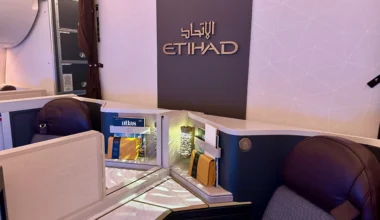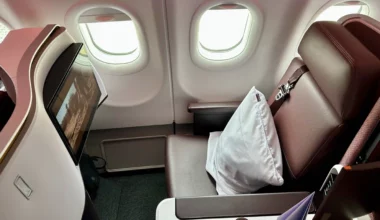By all accounts, the Boeing 777-8, expected to take flight later this year, has been a commercial failure. Though it’s laden with state-of-the-art features and was ostensibly well-suited to serve a thriving market segment (at least at its inception), the aircraft has yet to find many customers, with the last passenger 777-8 having been bought around ten years ago. I’d like to know why.
Where the 777-8 fits into the market
The 777-8 is a member of the 777X series, the next step in the evolution of the Boeing 777 line, and brings several significant upgrades to the market. The most striking of these are its new engines and wings. The aircraft uses the GE9X, the biggest and most powerful turbofan in the world, and a new composite wing, the largest ever used on a Boeing jet.
The 777X series includes two models: the 777-8 and the 777-9, identical except for the 777-8’s smaller body. With a capacity of 350 passengers, it’s intended to replace the aging 777-300ER and potentially serve a new class of ultra-long haul routes. But despite a theoretically clear demand for an aircraft of this size, only 40 have been sold, accounting for just 10% of 777X orders.
Problem #1: Huge wings and big engines
The biggest issue with the 777-8’s is its airframe, specifically its large wings and big engines. That’s likely due to the fact that the aircraft’s design was heavily influenced by its two keystone customers, Qatar and Emirates, leading some to cheekily label the aircraft “Tim Clark’s plane,” referencing the fact that the plane was largely built in response to the Emirates president looking specifically for something that could fly between Dubai and Los Angeles with a full payload.
It’s also worth noting that both Qatar and Emirates are based in the Persian Gulf where summers are intensely hot and dry. These factors call for enhanced takeoff performance, which requires larger wings and more powerful engines. Unfortunately, most airlines don’t operate as frequently in desert conditions, so the extra performance, which comes at the cost of efficiency, is ultimately unnecessary and uneconomical for most potential customers.
Problem #2: Bad timing
With a similar capacity and greater range, the 777-8 was meant to replace the 777-300ER. Unfortunately, since the 777-300ER is barely 20 years old and still generating revenue for airlines, the urgency for a replacement just isn’t there. Most likely, it’ll be another ten years before most airlines are ready to upgrade.
For a lesson on the importance of good timing in aircraft sales, take a look at the stellar sales numbers of the 777-8’s big brother, the 777-9. Healthy demand for that plane is owed in large part to its release coinciding with the steady phasing out of similarly large planes like the 747 and A380.
Problem #3: Niche market
Given the fact that the 777-300ER is still going strong, the remaining use case for the 777-8 is for long and thin routes–that is long-haul flights that are not heavily trafficked. The trouble is, the A350-1000, with a range barely less than the 777-8, has already hit the skies and has largely soaked up demand. Qantas, for example, has decided to use the A350 for its upcoming Kangaroo route, while Singapore and Qatar have also opted to use the Airbus for their ultra-long haul routes.
Even if the A350-1000 hadn’t entered the market first, the ultra-long-haul market would still be a hard nut for Boeing to crack. The 777-200LR, Boeing’s older ultra-long-haul jet, was the preferred choice by airlines for these routes and still didn’t sell all that well.
Reasons for hope
Even with the hurdles it’s facing, it’s premature to write off the 777-8 just yet. The aircraft has an unparalleled range of 8,800 nautical miles, outclassing every other commercial aircraft currently on the market. Given ultra-long haul routes continue to gain traction, the 777-8 could conceivably serve the increasing number of long and thin routes.
The 777-8 also holds its own as a freighter, matching the payload capacity of the 747-400 while offering a 25% improvement in fuel efficiency. The 777-8 cargo variant, introduced only a year ago, is already outperforming its passenger counterpart, with airlines like ANA, Qatar, Ethiopian, and Cargolux collectively ordering more than 50 units in 2022 alone.
Conclusion
The 777-8 is the latest reminder that bleeding-edge tech does not a successful passenger aircraft make. At the same time, market demand is fickle and the 777-8’s impressive range and its potential for freighter conversion offer some hope for Boeing. While I think the odds of Boeing axing the 777-8 program are non-trivial, it’s worth keeping an eye on the skies to see how the company navigates the turbulent journey ahead.







4 comments
I think the B777-8 will be a goodselling plane, but it will mostly be freighters. It kinda has the same situation as the B747-8 and a330-800, airlines just don’t need the extended range
Totally agree, I really don’t think we’ll see much of it as passengers.
Does it have improved air quality and noise reduction of the 787?
I’m not sure about air quality improvement as the 787 already filters cabin air extremely well, but this article suggests the 777X will be quieter than the 787.